Tesla, the trailblazer in the realm of electric vehicles, has undeniably revolutionized the automotive industry with its innovative technologies and sleek designs. However, one area where Tesla falls short of its reputation as a paragon of excellence is in its audio experience. Despite being heralded as a role model for the perfect car infotainment system, Tesla’s audio setup leaves much to be desired, giving off the impression that user experience is not a top priority for the company.
Poor appearance and lack of organization
Let’s delve into the details. When it comes to the presentation of music options, Tesla’s approach seems haphazard at best. And for a company that prides itself on innovation, this lack of attention to detail is disappointing.
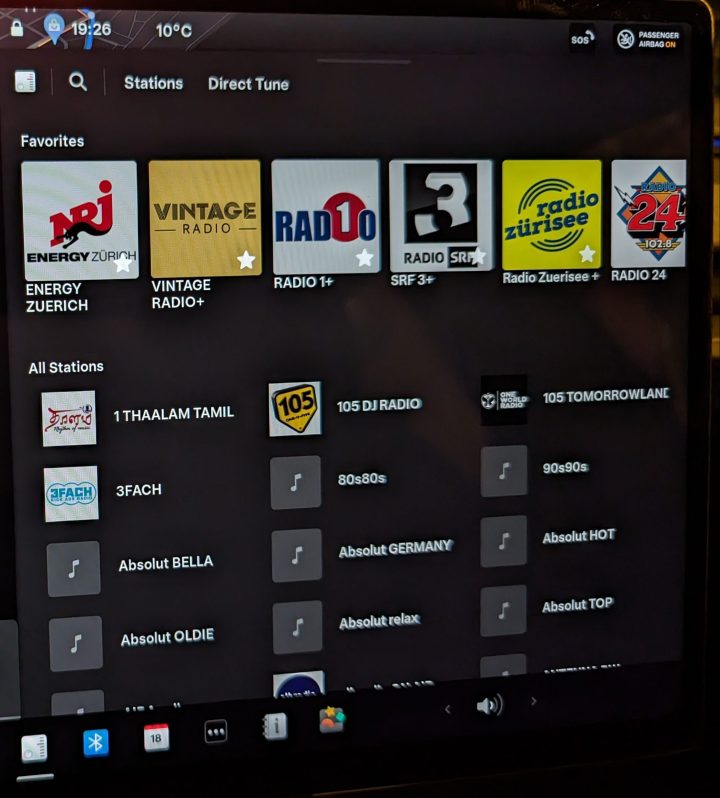
Unlike spezialized music services that meticulously curate music selections based on genres, locations, and user preferences, Tesla’s interface for radio is rudimentary, grouping everything under a generic “Favorites” section. The favorite stations are listed on a narrow band in one line and you have to laboriously swipe to the left if you have saved more than 6 stations. It’s clearly lacking any semblance of organization or cohesion. A meaningful browsing function is completely missing, there is only a global search which implies that you know the name of a specific channel. Instead, all receivable stations are listed alphabetically. There is no option to hide individual radio stations. For example, I am not interested in the Tamil radio station on top of the list.
TuneIn: How to do it right!
Furthermore, TuneIn Radio itself provides a stellar example of how radio stations could be organized and presented effectively. However, Tesla has not translated this exemplary user experience to its integrated TuneIn App, nor has it capitalized on it for its own Radio App. This oversight not only deprives Tesla users of a superior radio browsing experience but also sets a subpar standard for the company’s own offerings in the audio domain. Tesla should consider leveraging successful models (like TuneIn Radio) to enhance its infotainment system and provide users with a more intuitive and enjoyable radio listening experience.


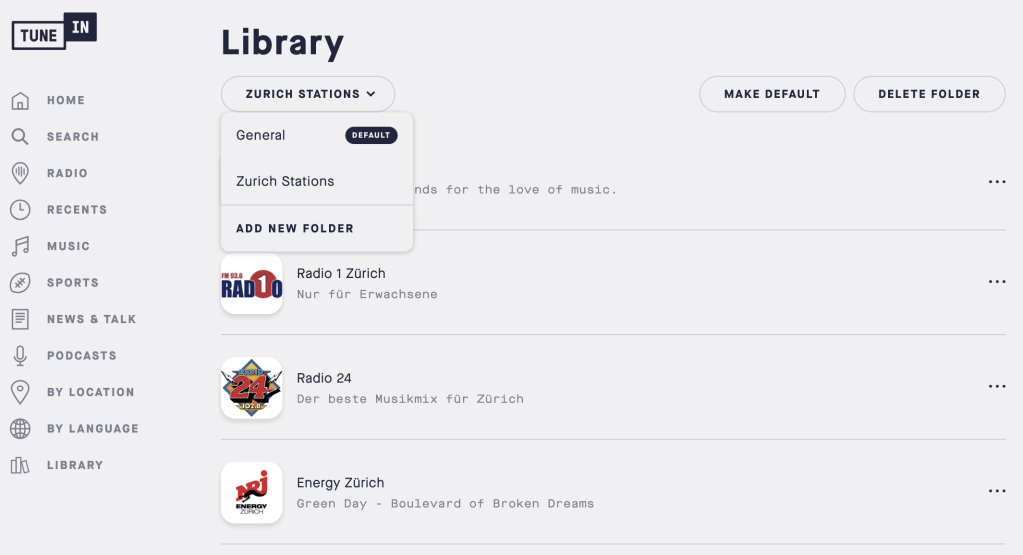
Inexistent volume leveling
The elephant in the room is Tesla’s inability to maintain consistent audio levels across different sources. Despite touting impressive CPU power and AI capabilities, Tesla’s infotainment system falls short in normalizing volume levels between various music sources and audio services. The stark contrast in volume levels can be jarring, with transitions between sources like DAB radio, Bluetooth, or TuneIn Radio often causing drastic fluctuations that verge on discomfort. In an era where seamless integration and user experience are paramount, Tesla’s oversight in this crucial aspect is puzzling.
Incomplete coverage of audio services
Furthermore, Tesla’s closed ecosystem limits user choice and flexibility. Unlike other solutions (such as Apple Car Play or Android Auto) that integrate third-party streaming apps excellently, Tesla restricts users to a limited selection of streaming services. This lack of compatibility alienates users who prefer alternative platforms (like Roon, Deezer, Qobuz etc.), effectively forcing them to compromise on their preferred audio experience. For example, I consistently use Roon as my only audio library of truth. I refuse to juggle multiple libraries and playlists, and with Roon, I have access to all my music, whether it’s my own local files or via a streaming service. This seamless integration works both at home and on the go, always ensuring the best possible conditions for my desired music listening experience. Moreover, Roon works perfectly within Apple CarPlay or Android Auto environments, demonstrating its versatility and compatibility with modern automotive interfaces. For a company that prides itself on innovation and cutting-edge technology, this reluctance to embrace external integration is a missed opportunity to cater to diverse consumer preferences.
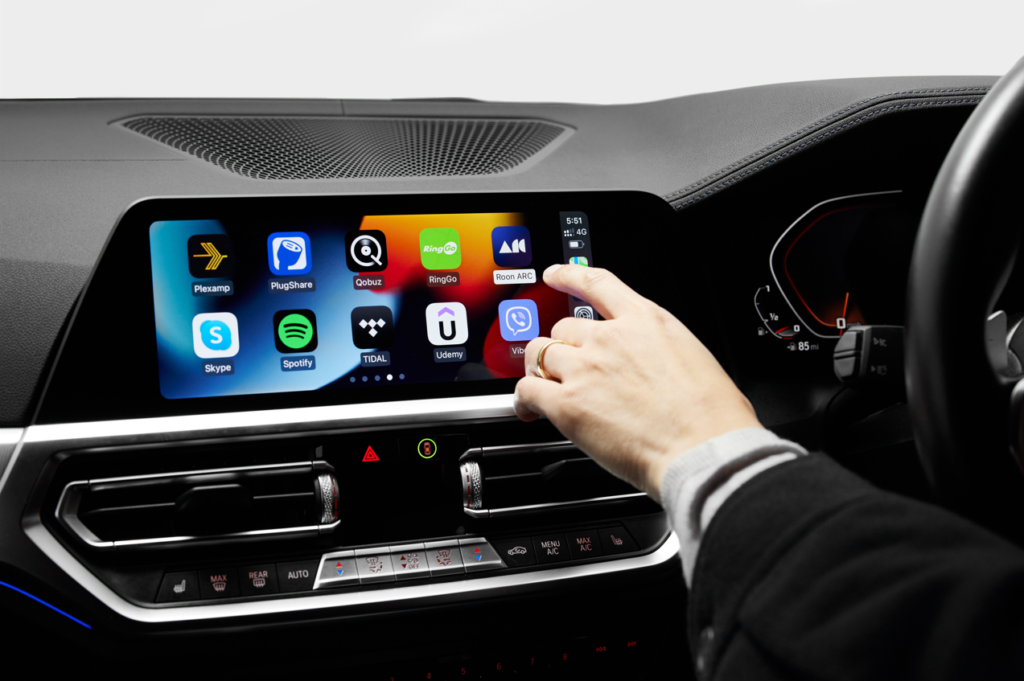
Incredibly poor product design
Another aspect that detracts from the overall user experience is Tesla’s cramped display layout. The current track information is relegated to a small corner of the screen, often truncated due to space constraints. This makes it difficult for users to quickly glance at essential details like the artist and song title, detracting from the enjoyment of the music listening experience. The only way to get this information is via trick 17:
- Expand the radion screen
- Swipe to the left on the currently playing track (to display the trip info)
The complete information on the currently playing song and artist now appears at the top center. Isn’t that totally insane? Who comes up with such retarded design ideas?
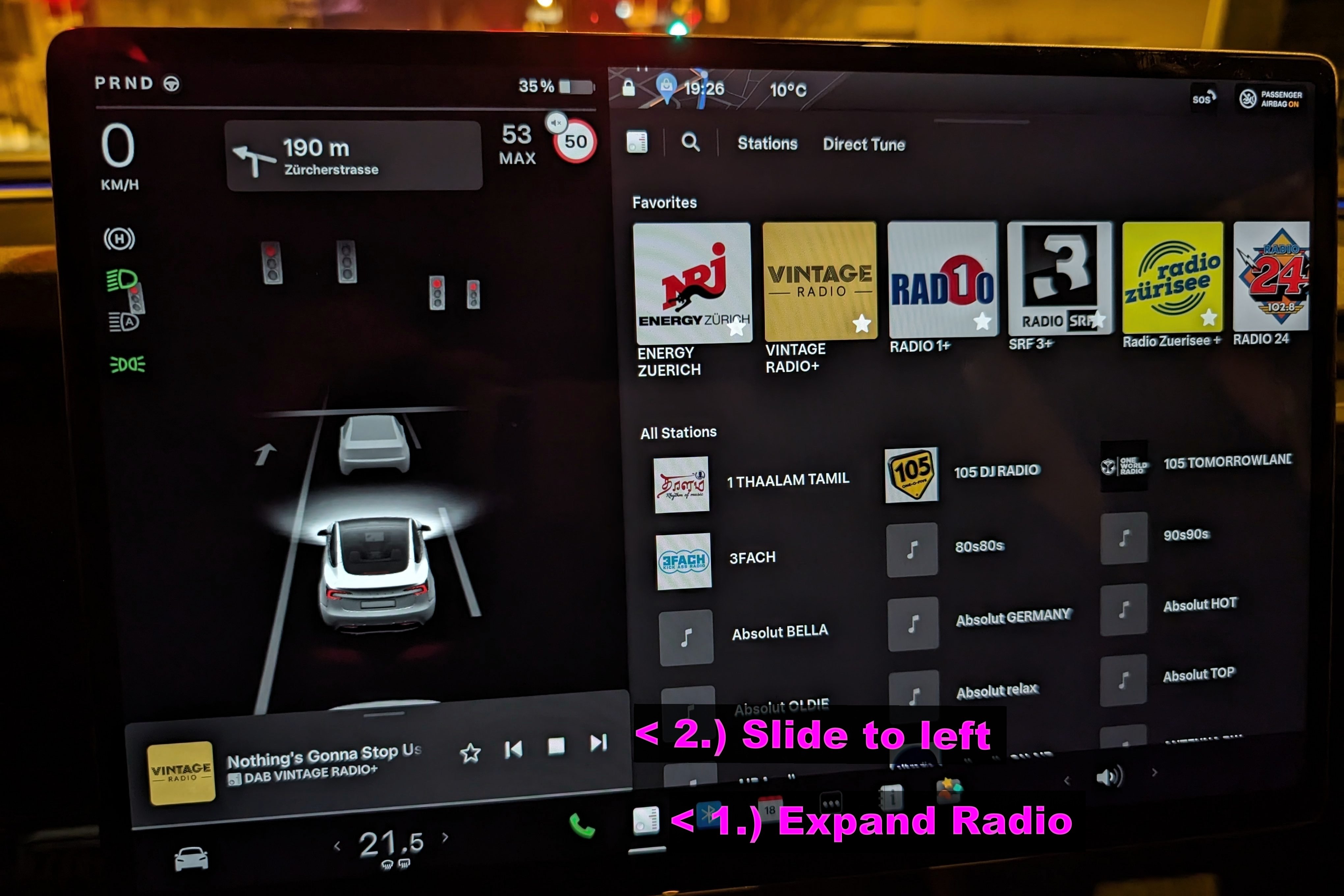
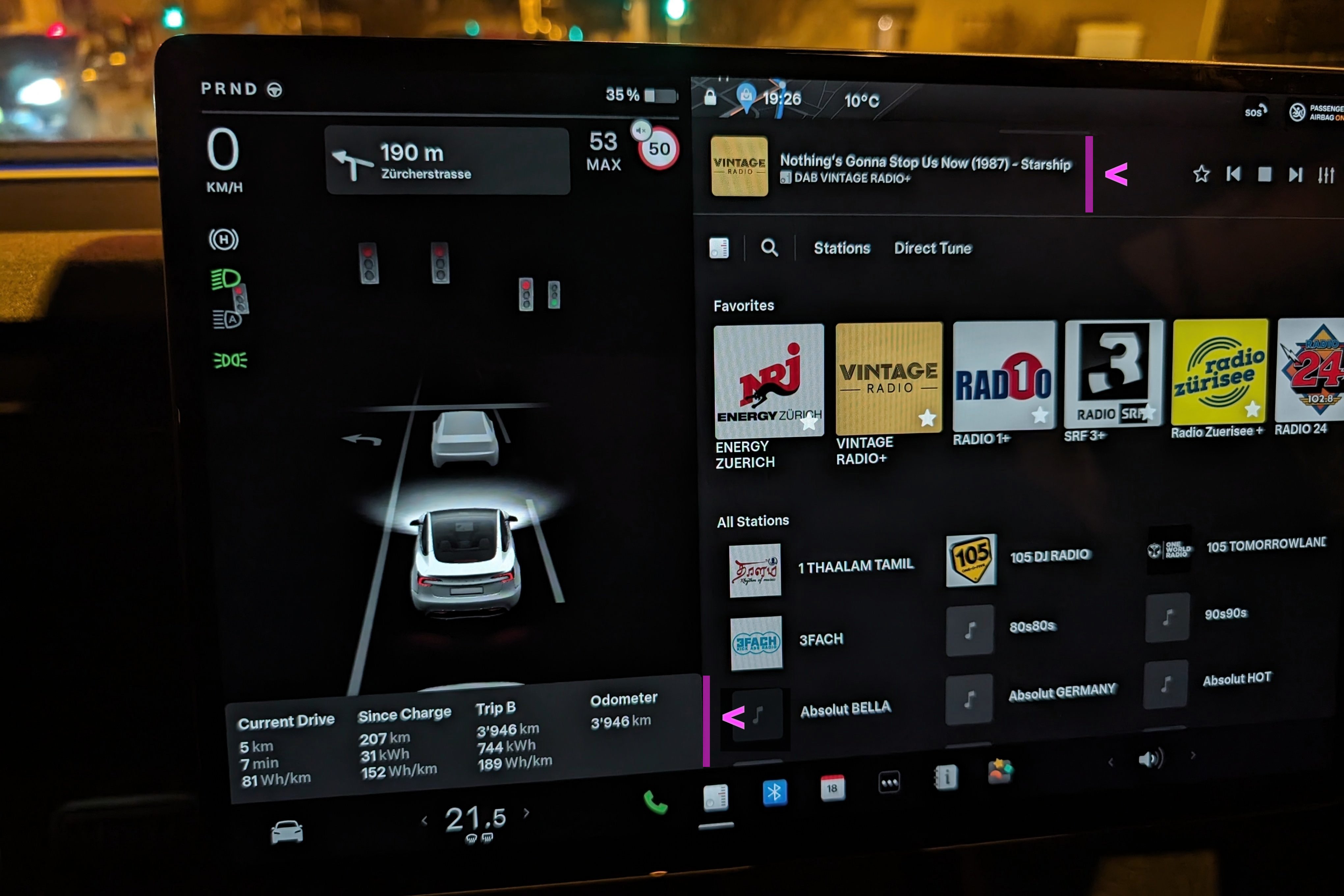
Innovation? Absent
Seamless integration between radio and streaming services would be a real step forward. Unfortunately, Tesla is not thinking from the user’s perspective here either. Especially when listening to radio stations, be it via DAB radio or TuneIn Radio, the ability to tap on the artist or song title would be extremely cool, allowing users to delve deeper into their favorite tracks or discover new ones effortlessly. This could be achieved by seamlessly integrating with the preferred streaming app, enabling users to add newly discovered songs to their playlists or artists/albums to their library on the fly. DAB Radio as well as TuneIn Radio transmit all the relevant information, therefore It would not be very complicated to filter this out and pass it on to another streaming app. Or: Use AI to recognize the song! A more intuitive approach, would enhance usability and elevate Tesla’s infotainment system to new heights of innovation.
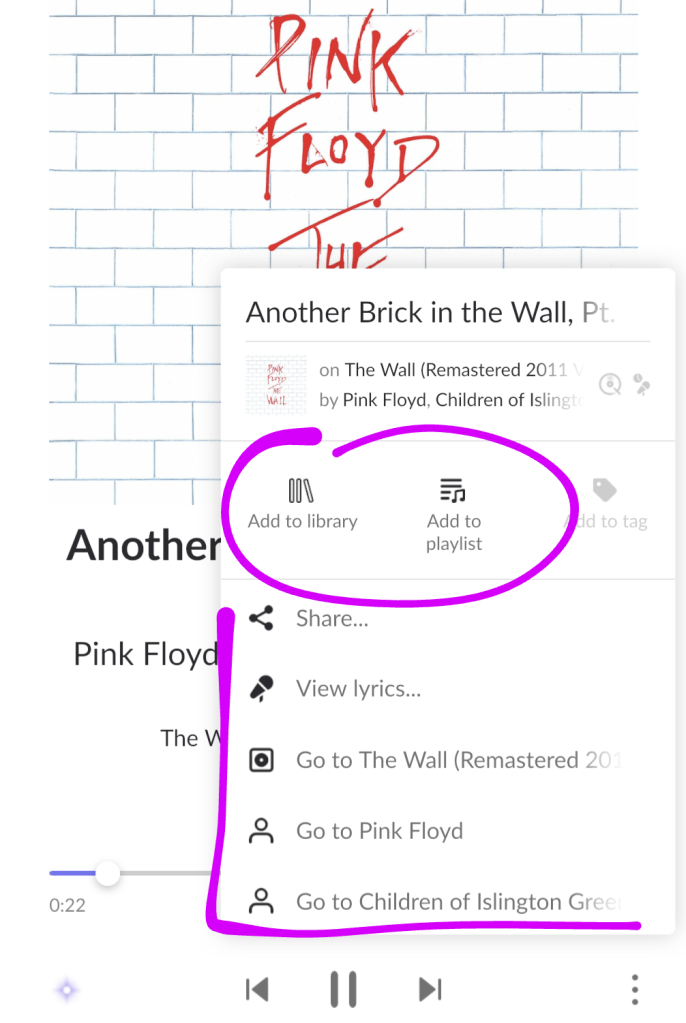
Wanted: The love for music
In conclusion, while Tesla continues to lead the charge in electric vehicle technology, its audio experience leaves much to be desired. From the lack of organization in music presentation to the inconsistency in volume levels and limited third-party integration, there are several areas where Tesla could improve to deliver a more polished and user-friendly infotainment system. As consumers increasingly prioritize seamless connectivity and personalized experiences, addressing these shortcomings will be crucial for Tesla to maintain its position as an industry leader in automotive innovation.

In light of these shortcomings, I would strongly recommend Tesla to consider hiring a media product designer who possesses a deep understanding of this field and is genuinely attuned to how music is consumed in today’s digital landscape. As a music lover myself, I find myself disappointed by Tesla’s lack of flair in this crucial aspect of the user experience. By prioritizing the recruitment of experts in audio design and user interface, Tesla could elevate its infotainment system to meet the expectations of discerning consumers who value a seamless and immersive music listening experience. But what am I talking about? After all, I have no idea about music and how to consume it! 😉
As always, just my 5 cents.
Cheers,
//Alex
